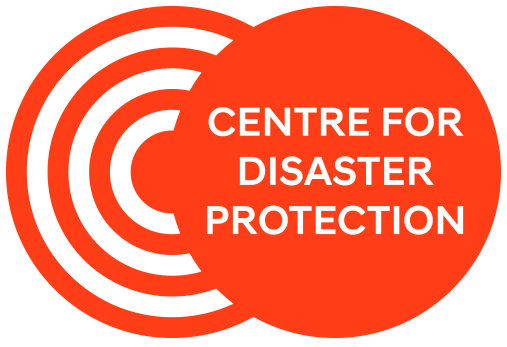Divided by a common language – seven questions and eight answers about disaster risk reduction, finance and climate change adaptation
by Jon Gascoigne, Lead Risk Finance Adviser, and Chris Kiggell, Senior Policy & Engagement Adviser
As part of a series of conversations tackling the sticky questions around disaster risk and climate change finance, Centre experts Chris Kiggell and Jon Gascoigne have sought to address key questions around climate change-induced losses and damages, and the role of disaster risk finance in tackling them. Following the first blog, they are now turning to definitional questions around disaster risk reduction, disaster risk finance and climate change adaptation.
1. Disaster risk finance – you mean insurance, right?
Yes and no. There’s a presumption that disaster risk finance is shorthand for insurance. To date that’s certainly where it’s featured most prominently within climate finance discussions. In practice, disaster risk finance encompasses a wide span of instruments, from contingency funds to catastrophe bonds. The critical point is that disaster risk finance is pre-agreed in advance, with specific triggers set out for when it’s released and how it’s designed to be used.
2. Aren’t climate change adaptation and disaster risk reduction different ways of saying the same thing?
Not quite. On a Venn Diagram, the overlaps are significant. But there are important differences. Disaster risk reduction focuses on immediate hazards, whereas climate change adaptation works on a longer-term timescale and considers protection against expected effects of climate change beyond individual climate shocks or extreme weather events. While disaster risk reduction efforts include climate-related hazards (such as floods and drought) they also incorporate non-climate-induced hazards (such as earthquakes and volcanic eruptions).
3. Where does disaster risk finance fit?
Climate change adaptation and disaster risk reduction are both concerned with eliminating and/or minimising risks, reducing their likelihood or impact – e.g., through enhanced early warning systems and/or resilient infrastructure such as flood defences. More specifically, disaster risk financing (as defined by the Centre for Disaster Protection) “covers the system of budgetary and financial mechanisms to credibly pay for a specific risk, arranged before a potential shock. This can include paying to prevent and reduce disaster risk and preparing for and responding to disasters.” All concern disaster risk and are practical applications nested within disaster risk management practices but mean slightly different things by it. Risk finance is often warranted as risks increase and where risk reduction or adaptation efforts may not be sufficient.
4. But doesn’t it make more sense to eliminate risks, rather than waiting to respond to them?
Not always. Prevention is critical, but the reality is that while some risks can be reduced or eliminated, others can only be managed at best. This is where the idea of ‘residual risk’ comes in – following climate change adaptation and/or disaster risk reduction efforts. Put simply, once you've done what is feasible in practical terms or realistic with the resources available.
5. If you can reduce some risks, shouldn’t you spend all your money on that?
The central question is how ministries of finance or other actors can best make smart choices with limited resources. Desilting rivers and building flood barriers may reduce the impact of above average rainfall, for example, but flood defences may still be overwhelmed by the 1-in-200-year mega-storm. Disaster risk finance may provide more immediate compensatory protection, while disaster risk reduction efforts can take time to be realised (e.g., mangrove restoration). Balancing these approaches is tricky. And national or local context is key. Decisions should be informed by transparent and impartial analysis of the risks and issues, consideration of value for money, and, most importantly – a clear focus on the need to protect the people most vulnerable to the risk.
6. Can disaster risk finance incentivise better disaster risk reduction – like sprinkler systems reducing the cost of fire insurance?
Absolutely. Risk-based pricing sends signals that can incentivise risk reduction activities, but they are not automatic and must be intentionally designed. Preferential rates or reduced premiums could – and even should – be linked to practical risk reduction measures, legislative or building regulation changes, or investments in early warning systems. Pre-agreed disaster risk finance plans can also incentive a 'build back smarter' agenda in the immediate wake of a crisis to strengthen the adaptive tolerance of civil infrastructure and national or community-level resilience to future shocks. But in practice, calculating this disaster risk reduction dividend is harder than expected, and good examples are scarce. Disaster risk reduction and disaster risk finance providers must start working better and more proactively together if they want to make the most of these opportunities.
7. Given predictions of worsening climate shocks, are we reaching the ‘limits of insurability’?
Let's face it; there are already 'limits to insurance' where it isn't a good fit for certain hazards or contexts. A changing climate may draw such limits out further, where prices become unaffordable, or insurers no longer offer cover for some hazards in some geographies. But let's also remember that climate change won't progress in a straight line; different places will be affected in different ways at different times. So, insurance may become redundant in some contexts but more useful than ever in others, depending on how risks change – and may be well placed to pivot to the new, emerging and unguessed risks that climate change will throw up. Insurance can also play a 'canary in the mine' role in signalling risk – where prices skyrocket, that can be the first sign that either risks aren't being managed or that more help is needed.
One final point. The more adaptation and mitigation efforts are frontloaded now, the more the long-term impacts of climate change can be managed and the further out any limits of insurability are pushed.

